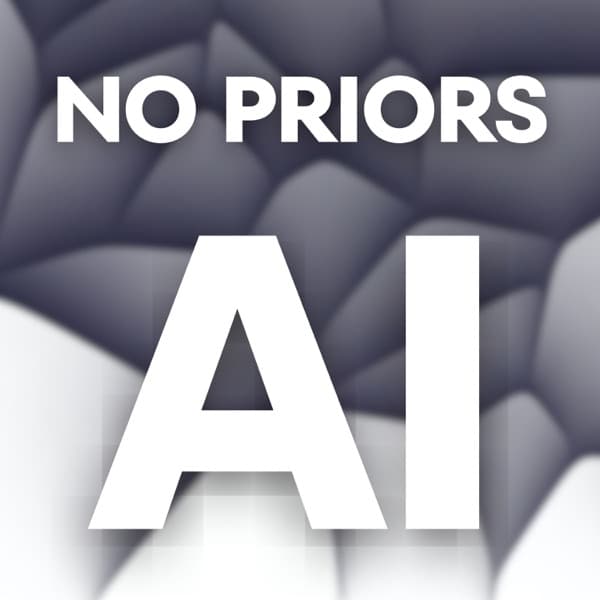Lightcone Podcast: The discussion centers on the transformative potential of AI in business, emphasizing its ability to automate processes, reduce costs, and expand market opportunities.
Lightcone Podcast - How AI Is Changing Enterprise

The conversation highlights the ongoing AI revolution and its potential to significantly alter business landscapes. AI's ability to automate tasks can lead to cost reductions and improved efficiencies, which in turn can elevate lifestyles by making services more accessible and affordable. The speakers discuss the importance of building software that abstracts AI models to deliver tangible outcomes to customers, rather than focusing solely on the AI technology itself. They emphasize that businesses should focus on delivering outcomes rather than just integrating AI models, as the true value lies in the application of AI to solve real-world problems. The discussion also touches on the evolution of business models, suggesting that as AI becomes more commoditized, companies will need to innovate in how they deliver value to customers. The conversation concludes with a vision of AI driving abundance and improving societal outcomes, provided that regulatory environments support such growth.
Key Points:
- AI can automate tasks, reducing costs and improving efficiencies, which can elevate lifestyles by making services more accessible.
- Businesses should focus on delivering outcomes using AI, rather than just integrating AI models, to solve real-world problems.
- As AI becomes commoditized, companies need to innovate in delivering value to customers through software applications.
- The evolution of business models will see AI being used to expand market opportunities and increase the total addressable market.
- AI's potential to drive abundance and improve societal outcomes depends on supportive regulatory environments.
Details:
1. 🔄 AI's Potential for Global Abundance
- AI-driven automation is enhancing production capabilities, significantly increasing output and efficiency.
- The implementation of AI technologies is reducing the cost of goods and services, making them more accessible.
- By lowering costs, AI contributes to improving global living standards, reducing poverty, and increasing the quality of life.
- This technological shift represents a major societal revolution, comparable to historical industrial revolutions.
- Unlike past revolutions, the AI-driven change can be structured to avoid dystopian outcomes, focusing instead on prosperity.
- Jevin's paradox highlights that increased efficiency can lead to greater resource use, ultimately supporting global abundance.
- An optimistic future where AI drives prosperity and abundance is both desirable and achievable, requiring strategic implementation.
2. 🎙️ Meet the Hosts and Guest: Aaron Levy from Box
2.1. 🎙️ Meet the Hosts: Partners at Y Combinator
2.2. 🎙️ Meet the Guest: Aaron Levy from Box
3. 🚀 Navigating the AI Revolution in Business
- Building applications on top of foundation model companies like OpenAI might be significantly more valuable in the next 10 years, compared to just using their models.
- A successful product often finds an initial 'wedge' or niche in the market before expanding, similar to how early cloud software developed.
- There's immense value in software that integrates with workflow, proprietary business logic, and customer data, extending beyond the capabilities of AI model tokens.
- Startups should strategize to stay ahead of larger AI models like ChatGPT by developing unique, non-replicable features and services.
- Concrete examples include leveraging AI to improve product recommendation systems, achieving a 35% increase in sales, and using AI-driven analytics to reduce operational costs by 20%.
4. 🏢 AI in Enterprise: Opportunities and Challenges
- Enterprises prioritize solutions like customer support automation and healthcare transcription systems over the AI models themselves, focusing on outcomes.
- The increasing intelligence of AI models benefits developers by eliminating the need for workarounds, allowing them to focus on delivering complete customer solutions.
- To succeed, companies should abstract models from the value proposition and ensure rapid integration of model updates to enhance customer solutions.
- Successful enterprises will swiftly incorporate AI advancements into their software to align with evolving customer needs.
5. 📈 Future of AI Models and Market Dynamics
- B2B AI workflow end users prioritize the effectiveness of workflows over the specifics of the AI model used.
- Model differentiation is notable now among skilled professionals, but a convergence in AI model quality is expected within five years, minimizing quality distinctions for 90% of business use cases.
- Anthropic's Claude is currently favored for orchestrating multiple agents in AI applications.
- Few companies are purely model-focused; most are evolving to offer software solutions, with Anthropic and OpenAI being examples of this shift.
- OpenAI's business model indicates a transition to a software company leveraging AI models for its services, emphasizing aspects like security, compliance, and uptime.
6. 🔍 AI's Impact on Software and Enterprise Strategy
- Meta's strategy to open source models instead of monetizing them directly challenges traditional revenue models and suggests a shift towards open collaboration in AI development.
- Launching a pure play model company with expectations of licensing revenue is not advisable due to the saturation of competition and availability of open-source alternatives.
- AI businesses must offer more than just AI tokens; they need to provide additional value propositions such as solving specific industry problems or enhancing existing processes.
- The cost of intelligence is projected to decrease significantly, potentially approaching zero, which will impact pricing strategies and accessibility of AI technologies.
- Startups should focus on creating software that leverages AI to address real-world problems, rather than merely providing AI capabilities, to ensure long-term viability and growth.
- Future opportunities in AI involve both vertical solutions tailored to specific industries and horizontal integrations that combine various AI systems to deliver comprehensive solutions.
- The rapid development of new startups and AI agents across all industries and job functions signals vast entrepreneurial opportunities and market growth potential.
- The AI industry is expected to mirror the growth trajectory of the early SaaS wave, with the potential for new category leaders to emerge by providing unique and scalable AI-driven solutions.
7. 🔗 Open Source, Security, and Adoption in AI
7.1. Open Source AI Models
7.2. AI Adoption in Enterprises
7.3. Interest in Underlying AI Technology
7.4. AI Model Economics
7.5. Case Study of AI Startups
8. 📊 Business Models and AI-driven Growth
8.1. Gross Margin Improvement
8.2. Software Development Focus
8.3. Building a Competitive Moat
8.4. Flexible Pricing Models
8.5. Usage-Based Revenue Models
8.6. AI's Elasticity Advantage
8.7. AI Adoption in Fortune 500 Companies
8.8. AI Native Workforce
8.9. AI as a Competitive Differentiator
9. 🌐 AI's Role in Enterprise Transformation and Workforce Evolution
9.1. AI Transformation in Enterprises
9.2. AI Implementation in Business Operations
9.3. Core vs Context in AI Strategy
9.4. AI in Industry and Open Source
9.5. Security and Trust in AI Adoption
10. 🌍 Envisioning a Future of AI-driven Abundance
10.1. AI and Cloud Infrastructure Dependency
10.2. Market Expansion through SaaS Transition
10.3. AI's Impact on Software Spending and Market Dynamics
10.4. Economic Implications and Competitive Dynamics
10.5. Future Vision: AI, Utopia, and Societal Impact
Included Channels
 Lex Fridman Podcast
Lex Fridman Podcast All-In with Chamath, Jason, Sacks & Friedberg
All-In with Chamath, Jason, Sacks & Friedberg Modern Wisdom
Modern Wisdom Greymatter
Greymatter In Depth
In Depth a16z Podcast
a16z Podcast Lenny's Podcast: Product | Growth | Career
Lenny's Podcast: Product | Growth | Career Lightcone Podcast
Lightcone Podcast No Priors AI
No Priors AI The Twenty Minute VC (20VC): Venture Capital | Startup Funding | The Pitch
The Twenty Minute VC (20VC): Venture Capital | Startup Funding | The Pitch How I Built This with Guy Raz
How I Built This with Guy Raz BG2Pod with Brad Gerstner and Bill Gurley
BG2Pod with Brad Gerstner and Bill Gurley Latent Space: The AI Engineer Podcast
Latent Space: The AI Engineer Podcast




